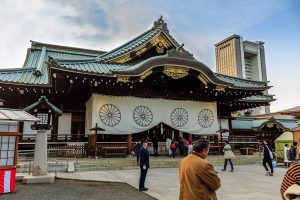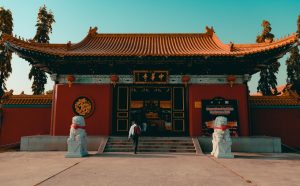Shinto Architecture
Shinto architecture has historical origins in the simple art of Buddhist design. Its emergence in Japan introduced the notion of permanent shrines, contrasting against the traditional Buddhist belief that shrines are temporary structures. It is believed that Shinto, as a distinct vision, came to fruition between 300 BCE and 300 CE, during Japan’s Yayoi period.

The Imperial Shrine of Yasukuni, Tokyo, Japan was founded by Emperor Meiji in June 1869. Photo by Ankit Garg, CC BY 3.0.
Shinto architecture has its own distinctive identity. This is marked by the use of features such as the setting of wood columns, either into the ground or into a stone base. This then creates the basis for wall panels constructed from materials such as clay, plaster and bamboo which are fitted across the structure.

Photo by Paritosh Soren from Pexels.
Because it is an ancient style, the construction of many ancient Shinto structural landmarks, such as the Hokkaido Shrine in Sapporo, were ordered by emperors, as opposed to architects. Emperor Meiji was responsible for enshrining three different deities at Hokkaido in 1869.
Cover photo





